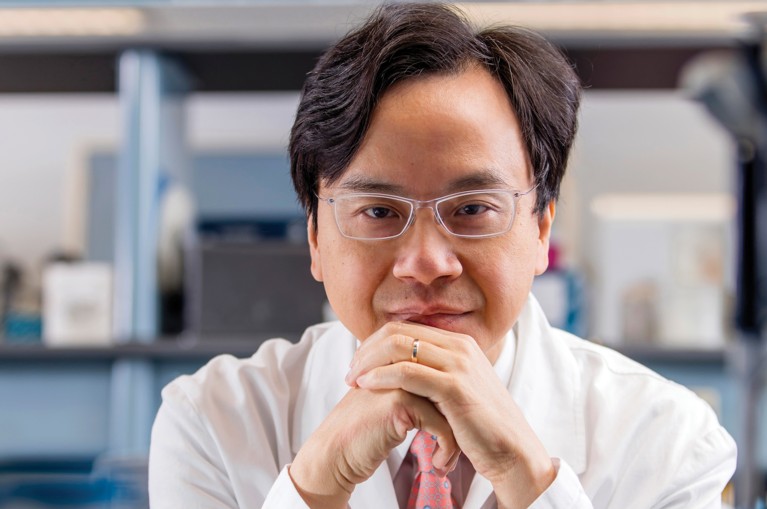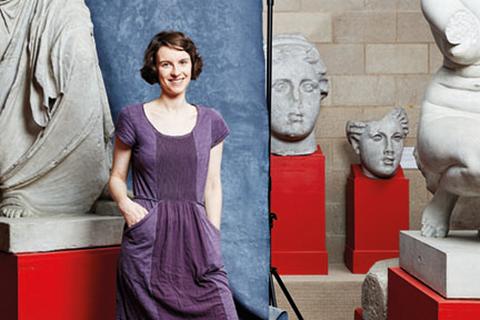Dennis Lo – Messengers of Health
DNA molecules released by tissues deep within our bodies allow doctors to take a non-invasive glimpse into our health. This technology holds promise for early and safer detection of disorders, even from before birth, and throughout life.
 When I was in secondary school in Hong Kong, I read a biology textbook that had photographs of famous scientists, including James Watson and Francis Crick, co-discoverers of the DNA double helix, standing in front of King’s College Chapel. This inspired me to apply to Cambridge to read medicine and I was fortunate to be admitted to Emmanuel. Richard Barnes was my Director of Studies, and he instilled into me the importance of going back to original experimental evidence. I first had the opportunity to do a research project using DNA-based technologies in my third year. For my clinical studies, I moved to Oxford, where I was eager to try out my newly learned DNA related skills.
When I was in secondary school in Hong Kong, I read a biology textbook that had photographs of famous scientists, including James Watson and Francis Crick, co-discoverers of the DNA double helix, standing in front of King’s College Chapel. This inspired me to apply to Cambridge to read medicine and I was fortunate to be admitted to Emmanuel. Richard Barnes was my Director of Studies, and he instilled into me the importance of going back to original experimental evidence. I first had the opportunity to do a research project using DNA-based technologies in my third year. For my clinical studies, I moved to Oxford, where I was eager to try out my newly learned DNA related skills.
As I studied obstetrics, I learned about concerns about foetal health. The most accurate method to test foetal DNA or chromosomes was amniocentesis, which exposed both the foetus and mother to a small but definite risk of complications. I wondered whether it might be possible to develop a test based on taking a blood sample just from the mother as the foetus might release nucleated cells into the mother’s blood and if the foetus was male, then I might be able to detect male cells. I persuaded one of my clinical teachers to let me try this out in the laboratory and the data suggested that this was possible. I then tried to develop this test, but unfortunately the number of foetal cells in the mother’s blood was exceedingly small. I tried different approaches over the following eight years but could never achieve the robustness that would be necessary for a clinical test.
In 1997, I decided to return to Hong Kong. I knew I would need to start a new research direction and wondered whether foetal DNA might be present in another component of blood: plasma. I boiled some, and to my surprise was able to detect foetal DNA in a very crude preparation. Even more unexpectedly, I found that as much as five to ten per cent of the DNA in the mother’s plasma came from a tiny foetus: the number of foetal cells in the mother’s blood can be one in a million, or lower.
I spent the next 14 years developing this into a non-invasive prenatal test for foetal chromosomal disorders, which for certain cases turned out to be extremely accurate. Launched in 2011, non-invasive prenatal testing (NIPT) is now available in some 90 countries around the world, and is used by millions of pregnant women every year. I realised that this technology could also allow DNA molecules released from other body tissues to be detected, such as from a cancer, a diseased organ (for example from the brain following a stroke), or a transplanted organ during rejection. These floating DNA molecules in blood make it possible to monitor the health status of the patient. This field is referred to as ‘liquid biopsy’ because through the sampling of a liquid (such as blood), one can obtain information that could only previously have been obtained through an invasive biopsy.
I have been very fortunate to have the opportunity of working in this exciting field over the last two decades. Through a modest donation to Emmanuel, I am hoping that the creation of a post-doctoral position will give a helping hand to young Emmanuel scientists as they embark on their research journeys, so that they too can enjoy the thrill of discovery. We are grateful to Dennis for generously endowing the Dennis Lo post-doc in biomedical sciences.


